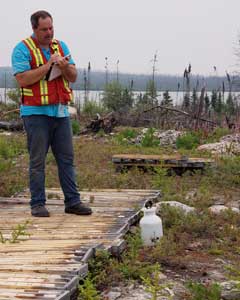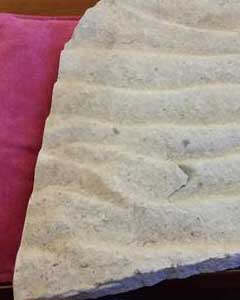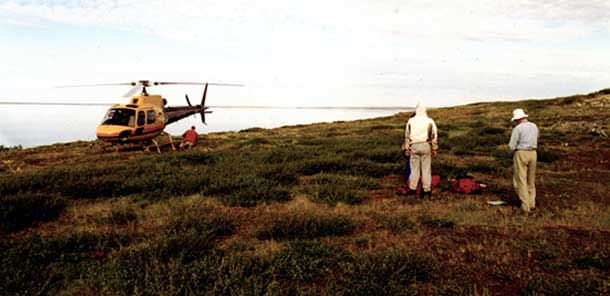The More Things Change, the More Things Stay the Same
Sometimes as a geologist you come across something that strikes home how much and how little the earth has changed over the millions of years it has been in existence.
For me, one of those moments was travelling to the Rudy’s Canyon exposure of Thelon Sandstone west of Aberdeen Lake in Nunavut. At the time, I was a junior geologist working for Cameco on its Thelon basin projects.
 It was such an exciting time in my career, flying around in helicopters, spending time on the tundra and being introduced to new geology. Even during spring the days were very long and you’ve never experienced such silence as the tundra on a calm day.
It was such an exciting time in my career, flying around in helicopters, spending time on the tundra and being introduced to new geology. Even during spring the days were very long and you’ve never experienced such silence as the tundra on a calm day.
The cliffs in the Rudy’s Canyon area are comprised of Thelon sandstone and in parts of the exposed rock you can see beautifully preserved ripple marks and large plates of rippled sandstone that have tumbled down from the cliff sides.
I had to take some home. So, I carried a large plate back to the helicopter and then brought them in my bag south to Saskatoon. I still have them today.
The most interesting thing about these ripples is that the Thelon Sandstone is about 1.7 billion years old. The Thelon Basin is part of the Barrenland Group, developed within the continental interior of Laurentia during the late stages of formation of the Paleoproterozoic supercontinent Nuna.
It is an intracratonic basin, remarkably similar in age and geology to the Athabasca Basin that hosts our Saskatchewan uranium mines. At this time in earth’s history, there were no plants or animals on the continents. At most, we had algae. So, when these ripples were formed, the area was one wide plain of sand and water.
 These ripples would have formed in the same way ripples do today, by the action of waves in shallow water. Despite the fact that it was billions of years in the past when plants didn’t exist and the atmosphere had little oxygen, they look nearly identical to the ripples you see in the shallow water at beaches and rivers today.
These ripples would have formed in the same way ripples do today, by the action of waves in shallow water. Despite the fact that it was billions of years in the past when plants didn’t exist and the atmosphere had little oxygen, they look nearly identical to the ripples you see in the shallow water at beaches and rivers today.
That is one of the most interesting things about geology. Part of our job as a geoscientist is to look at the geological processes active today and use them to interpret what has happened to rocks long in the past.
ABOVE: Darcy Hirsekorn, P.Geo., is a consulting geoscientist at Uranium Energy Corp. and Uranium Royalty Corp.
LEFT: Thelon sandstone.
